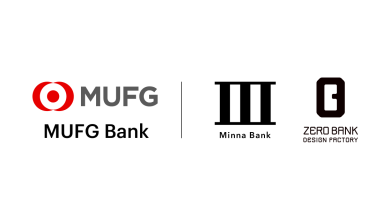
The Internet economy in Southeast Asia is projected to grow to USD $360 billion by 2025, and businesses in the region are expected to keep spending money on innovative new tools and technologies, while also monitoring the results of these bets on digital transformation.
 Since just a third of organisations worldwide accomplish or exceed their goal value and achieve sustainable change, new platforms often present difficulties. How can we tell if the digital transformation has delivered on its promises in the face of a growing digital economy and rising IT spending?
Since just a third of organisations worldwide accomplish or exceed their goal value and achieve sustainable change, new platforms often present difficulties. How can we tell if the digital transformation has delivered on its promises in the face of a growing digital economy and rising IT spending?
Sandie Overtveld, Vice President and General Manager of Asia Pacific at WalkMe, in an interview with Data & Storage ASEAN, gave some insights on the state of digital transformation in Southeast Asia, along with key details for the region to gauge the success of their digital transformation.
Over the past two years, the growth of the digital economy in Southeast Asia had accelerated due to the pandemic. Specifically, in the first half of 2021, investments in Southeast Asia’s internet economy rose to USD $11.5 billion, putting it on par with the previous year’s value of USD $11.6 billion. Currently, the region’s digital economy is on track to reach USD $1 trillion by 2030. As such, digital transformation projects have surged to keep pace with this explosive growth.
Nevertheless, plenty of companies seem to be doing digital transformation wrong, as only about a third of transformations meet or exceed their target value and achieve sustainable change. Overtveld breaks the problem down into two simple points:
- Data Silos. Many companies use standard systems to manage their processes and workflows. However, these systems are still siloed. There is no central data depository for everyone to make decisions and real-time changes. Standardised, modular products simply cannot respond fast enough to market requirements today. Organisations must break these siloed systems and functionalities, extract business logic and create shared services so they can be leveraged across their business units.
- Slow decision-making. If integrated systems and data models do not result in faster decision-making processes, then a business’s digital transformation has not reached its full potential. Creating a more agile decision-making process involves at least two steps. First, replace manual and repetitive processes with computation. Second, once interdepartmental data is uniform, businesses must build mathematical models for all relevant business functions and develop corresponding algorithm modules.
Biggest Obstacle for Digital Adoption
Across Southeast Asia, SME businesses report that they have plans to invest in digital technologies within the next three years, with 54.9% stating they are in the early stages of digital maturity. However, there are existing challenges that are slowing down growth in this area. For one, talent shortages are contributing to the problem. If businesses want to stay competitive, integrating tech into the business will help. But with the lack of digital skills, employees’ progress will stagnate.
“Digital transformation is a journey rather than a destination that can make it tricky for IT teams that are traditionally accustomed to measuring success in post-mortem-type results or ongoing performance metrics. However, it is especially important to track digital transformation progress,” said Overtveld when asked about the best ways to gauge digital transformation success.
Overall, according to Overtveld, only about a third of transformations meet or exceed their target value and achieve sustainable change. These are the companies in the win zone.
Overtveld emphasised the need to measure the return on digital investments as both are standard and essential. CEOs should look not only at the value that is being provided by individual priority digital initiatives but also at initiatives’ collective support of strategic organisational goals. WalkMe’s Vice President and General Manager of APAC also reminded business leaders to keep in mind there is no such thing as standing still, as making little or no investment in relation to the competition is going to make them fall further behind.
“Digital investment is also about loss avoidance,” said Overtveld.
Digital Adoption Platform: Crucial to the Success or Failure of Digital Transformation
A Digital Adoption Platform, or DAP, is software designed to facilitate seamless software guidance by simplifying the user experience and ensuring proficiency on any software, website or app. The purpose of this software is to provide comprehensive visibility into the context of how end-users are traversing other digital resources (such as another software, an app, or a website) and whether or not they are being utilised to their optimum. This information can then be used to continuously guide these same users on how to best utilise the software, app or website and, in turn, drive better adoption.
Digital adoption platforms are specifically developed to ensure successful digital transformation and increase ROI on software investments by (a) giving organisations insights into how digital tools are being used and (b) providing guidance or walkthroughs for correct usage. Such guidance is invaluable because the digital adoption process is constantly evolving and new technology and business practices can be overwhelming and hard to keep pace with—thereby creating negative user experiences, like user burnout, dissatisfaction and, critically, poor performance. Digital adoption platforms were specifically created to streamline digital change and mitigate or even eliminate these negative effects.
But how exactly does the use of DAPs maintain visibility, give control and successfully enable success beyond digital transformation?

As Overtveld explains, DAPs provide enterprises with unprecedented visibility into the usage data of their technology investments and proprietary digital products, enabling them to course-correct users with pinpoint accuracy and maximise their ROI from technology investments. With this level of data visibility across an enterprise’s tech stack, organisations can see precisely how users are interacting with their applications and where they are getting stuck, and then swiftly deploy solutions where necessary.
“DAPs also provide immediate insight to uncover the gaps between the user experience and an enterprise’s business goals. With actionable insights, organisations can create and deliver elegant experiences that enable users to access the full functionality and value of their applications, ensuring adoption and ultimately fulfilling the promise of digital transformation,” Overtveld added.
Digital Transformation for the Future
To flourish in the digital age, organisations need to undergo digital transformation, which involves making changes to corporate processes and initiatives. For most businesses, this process necessitates a departure from established ways of thinking and the adoption of new methods that emphasise teamwork and experimentation. These fresh perspectives lead to novel ideas that can enhance the quality of service provided to customers, motivate staff to think creatively and ultimately grow the business.
WalkMe can help in all of the above, aiding businesses in recognising the benefits of their technology investments and, as a result, speeding up their digital transformation efforts. With the help of WalkMe’s Digital Adoption Platform, businesses can track the progress of their digital transformation and take the necessary steps to increase the ROI of their software deployments.




